Cooking dry beans is easy, and can be the basis for a great variety of meals. Canned beans are convenient in a pinch, but once you learn to cook your own, you’ll be glad you have that skill in your pocket. Here are 3 ways to cook dry beans.
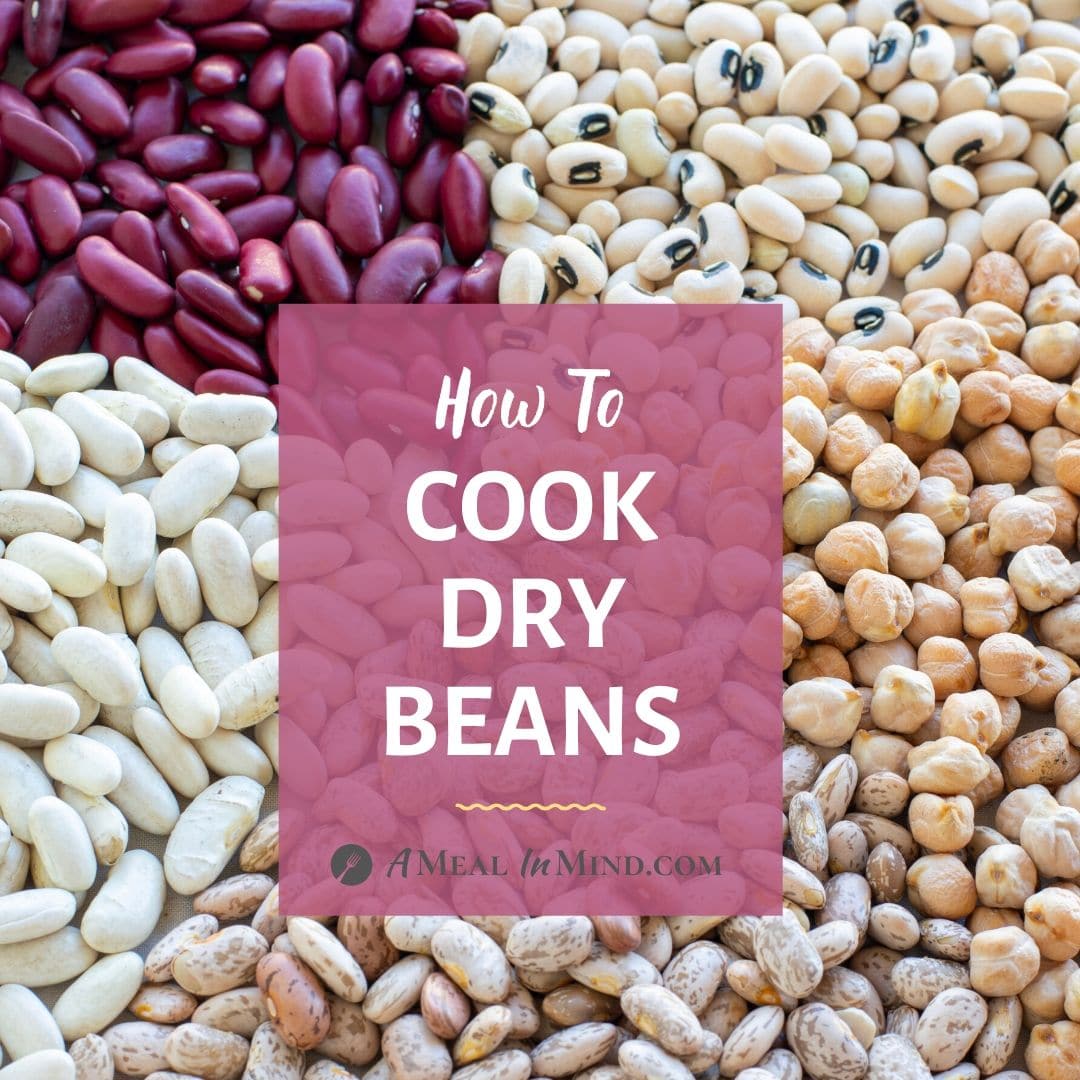
I keep a few types of canned beans on hand in case I need a small quantity. It’s better though if I plan ahead and cook companion recipes. For example, these tasty carrot-apple muffins contain ½ cup of the garbanzos I cooked for a batch of hummus. Amazing, right?

Beans are a delicious component of many traditional cuisines like Mexican (pinto beans), Indian (dal), Japanese (soy) and Mediterranean (chickpea) cuisines. They are good sources of antioxidants, fiber and folate. Beans soak up flavors, add heartiness to the meal and freeze well.
Dry beans are economical, and here's an example I found in Serious Eats. Let's say one pound of dry black beans costs $1.39 and will yield about 7 cups of cooked black beans. That 7 cups of cooked black beans will yield 14 servings. One ½ cup serving of cooked-from-scratch black beans costs $0.10. A can of Goya black beans costs 99 cents and contains about 1 ½ cups of cooked beans, so about 33 cents per ½ cup serving. Dry beans for the win!

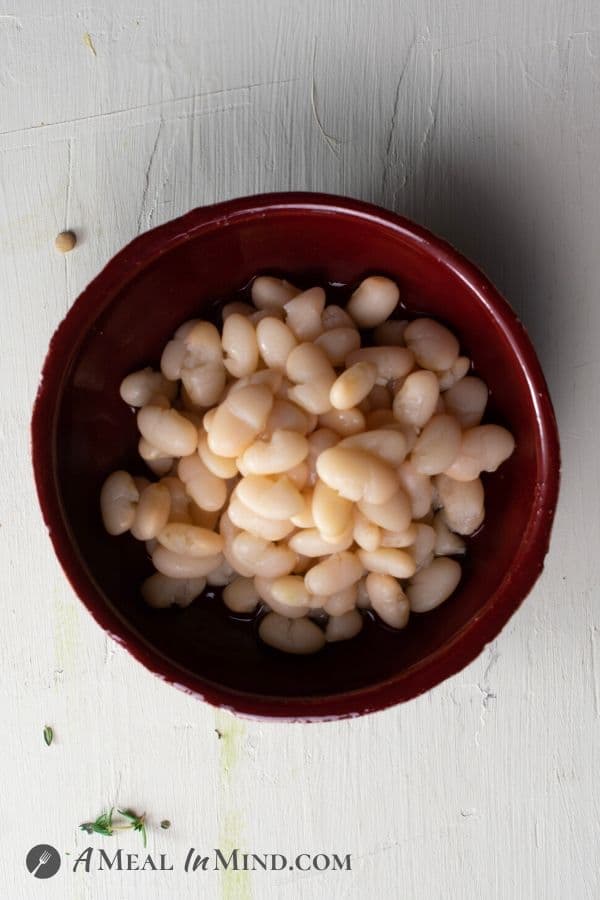
There are some risks to eating beans. Some can trigger allergies -- peanuts and soybeans being the most common. As all beans are related, if you are allergic to one, be careful with others.
Beans are completely gluten-free, so can be eaten in any gluten-free recipe, but they don't work in all diets. People who follow the paleo and keto diets usually don’t eat beans. Beans aren’t included in the paleo diet because they contain substances called lectins and phytates that in high amounts can interfere with your body’s ability to absorb minerals and nutrients. For the keto diet, beans are too high in carbohydrate. Only four legumes -- navy beans, lentils, split peas and lima beans -- are GAPS compliant because they are the least starchy.
Beans make great appetizers, as with this black bean dip.
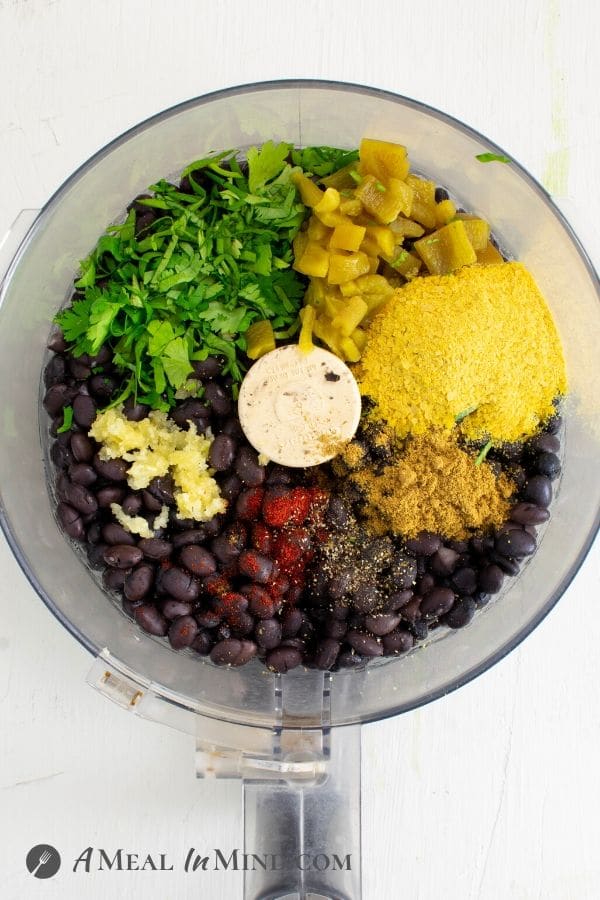

Soaking beans
Should you soak? Soaking helps make the beans more digestible - less likely to cause gas - because it reduces the amount of phytates in the beans. And, in my experience, soaking can shorten the cooking time and make for a tenderer bean. There is a fascinating article in the Huffington Post that found no difference. Try it for yourself, I say.
When you cold-soak beans for at least 24 hours, they partly germinate. As they germinate, they naturally reduce the phytates. Phytates protect against some diseases, so we don’t want to eliminate them altogether, according to an article in Precision Nutrition.
I usually don’t soak lentils or split peas. I do find it helpful to soak whole mung beans, though!
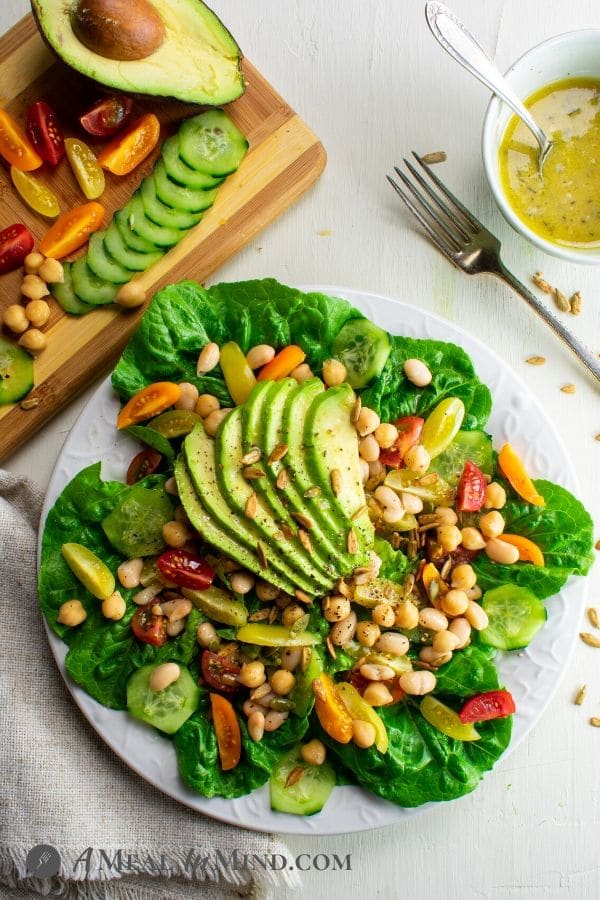
Two soaking methods
Cold-soak
This is the method I use. Place beans in a container with water to cover (i usually soak the beans in the pot I’ll cook them in). Assume the beans will absorb water and swell, so cover with at least an inch of water. Soak overnight, rinsing at least every 8 hours. Here’s the difference in size between dry (top right), soaked (top left) and cooked (bottom) garbanzos.

Hot-soak
Place the beans in a pot with enough water to cover. Bring the pot to a boil, then turn off the heat and let cool for at least an hour. Then drain off the water and rinse your beans. They are ready to cook in your recipe.
I have had less success with this method and suspect it doesn’t get rid of as much of the substances that cause indigestion - but some swear by it!
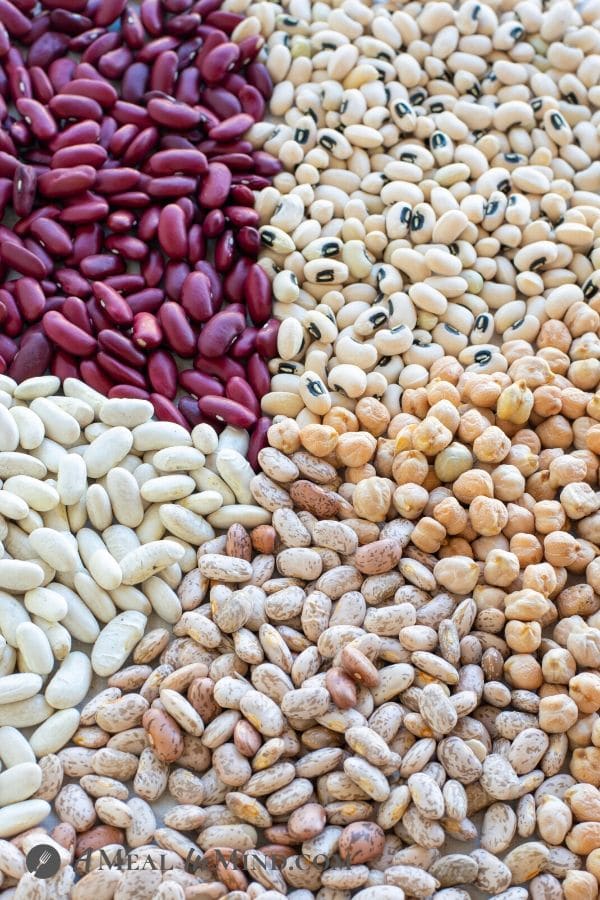
Three cooking methods
The first dry beans I can remember cooking were in my college days (!!!) when I learned from a dorm-mate how to cook refried beans starting with dried pintos. It was the recipe he had grown up with and cooked on the stovetop.
The recipe: 2 cups of beans with 5 cups of water, cook covered until soft, then mash. Stir in one stick of butter, then salt to taste. The refries always came out great and were cheap and easy to make. I had little money, so was all about cheap and easy in those days.
Over the years since then, I’ve used three ways to cook beans. Your choice depends on what equipment you have: soup pot with a lid vs. slow-cooker vs. Instant Pot. Now that I have an Instant Pot, I confess I use it most of the time - but it's not always the right tool.
With quicker-cooking legumes like lentils, black-eyed peas, and split peas, the soup pot is still the simplest option. If I didn't have the Instant Pot, I'd probably use the slow-cooker just for the convenience - except I was never able to get garbanzos cooked to my liking in my Crock Pot, even after a 48-hour soaking!
See notes below.
And please pin for later!

I hope these tips have been helpful - I certainly would love some comments about your experiences in cooking beans and how this matches what you do!
Enjoy.
Beth
Some of my favorite recipes using beans
Red Beans and Rice 2 ways Gluten and dairy free
Links to products for purchase are affiliate links. If you click on a link and make a purchase, I may earn a small commission on the sale at no additional cost to you. This helps me with the costs of blogging, and I thank you! You can find my ‘shop’ page here.
How to Cook Dry Beans
Ingredients
- 1 cup of dry beans
- 2 cups of water
- Salt to taste
- Oil or fat if desired
Instructions
Stove-top method
- Soak your beans by either method, then rinse.
- Place the beans and water into a pot with a cover.
- Bring to a boil, then turn down to a simmer so that the beans don’t boil over. The special challenge of the stove-top method is that beans are starchy and the starch makes the cooking water boil up if you don’t keep an eye on the heat. Once you find the right setting for a low simmer, you can just ignore them.
- Simmer until the beans test tender. Drain off and discard excess liquid unless you plan to freeze the beans. Stir them into your recipe or freeze for later.
- The same method works with all beans I’ve tried except for garbanzo.
Slow-cooker method
- Soak your beans by either method.
- Place your beans into the slow-cooker with enough water to cover (a little more for larger beans).
- Cook the beans for 7-8 hours on the medium setting or until the beans are tender. Every crock-pot or slow-cooker is a little different, so allow more time the first time you make beans, or with larger beans like kidney beans. No need to stir the beans - just leave the cover on.
- Once the beans are tender, drain the liquid as with the stove-top method, unless you will be freezing the beans. Stir the cooked beans into your recipe.
Instant Pot
- Soak beans as for the other methods.
- Add the soaked beans to the pot along with enough water to cover.
- Set the Instant Pot to the right length of time according to the size of your beans. For example, I use:
- 27 minutes for black or navy beans or black-eyed peas
- 29 minutes for kidney or large white beans
- 35 minutes for garbanzo beans
- Let the pressure in the pot come down by natural release for 15 minutes, then use manual release.
- Use or store the beans as for the other methods.
Notes
- Don’t add salt or other seasonings, including vinegar, until the beans are cooked, as adding these too soon can keep the beans from becoming completely tender.
- If you plan to freeze the beans, keep the cooking liquid - the beans will freeze better in the liquid.
- The liquid from cooking chickpeas is called aquafaba and is an excellent emulsifier in a salad dressing. We usually freeze a couple of tablespoonfuls of the liquid to mix into our next batch of dressing.
- If you will be using the beans for a recipe where the beans need to be mashed or pureed, use extra water and cook them for longer than you might if you’ll be stirring them into soup.
Please pin for later!
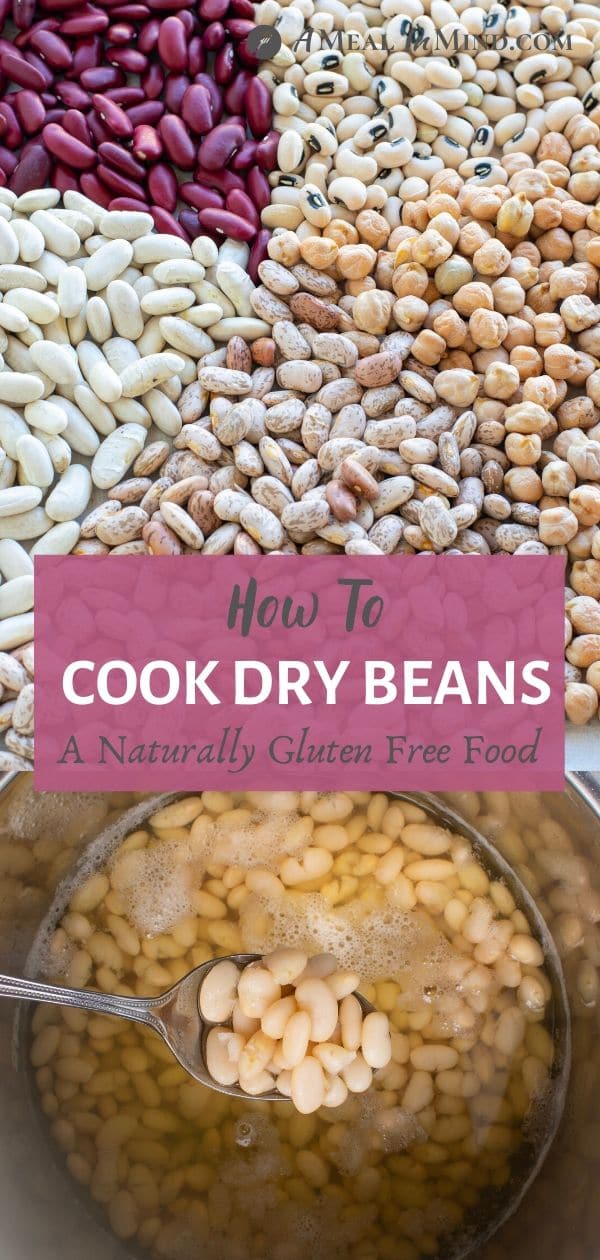
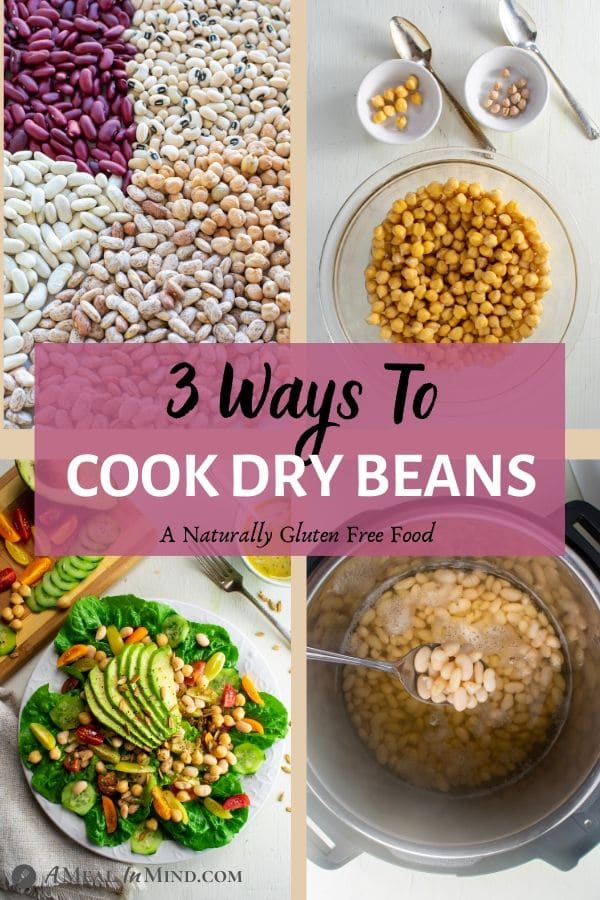













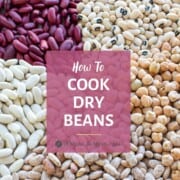
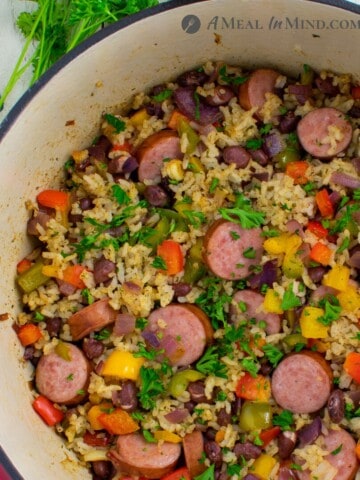
Angela
I have always loved the cold soak method. I appreciate the information on a hot soak for beans, in case I need to speed things up when I didn't plan ahead so well .
Beth
Hi Angela, I'm with you that the cold soak works the best because it takes advantage of beans' natural tendency to sprout, but I am guilty about sneaking in that hot soak method a few times!
Nart at Cooking with Nart
Thank you for sharing these! Such useful information here!
Beth
Thank you so much, Nart! I'm glad it was helpful.
Lina
It is so good to learn about the different ways to cook dry beans. I will have to start using my instant pot more. Thanks
Beth
Thanks, Lina, cooking beans is probably my main use of the IP - always nice to use the kitchen gadgets more.
Michelle
What a useful post, I only know about pre-soaking the beans. Thank you for sharing.
Beth
Hi Michelle, I'm so glad there's a tip here that you can use!!
Rachel Nelson
I've always done the hot-soak method because that's the way my parents did it. I'm going to try cold soak to see if that woks better.
Beth
Hi Rachel, I think my mom did hot-soak too, but I swear by cold-soak if you have the time!
Anindya Sundar Basu
Kidney beans or Rajma s are a very popular dish in India and we love our beans. This post is like an eye opener for more ways to cook the beans
Beth
Thank you so much, Anindya. Glad there was something new in the post for you.
Jacqueline Debono
I always use dried beans rather than canned. I soak them in cold water and cook on the stove top! I've never used the hot soak method. In fact, before reading this I didn't know it was possible!! I guess it's useful for times when one forgets to soak the beans the night before wanting to cook them! Has happened!
Beth
Hi Jacqui, I use the hot soak method so rarely too - I think they come out so much better cold-soaked - but always good to have a backup plan as you say!
Travel Clans
I usually used cold soak and leave them overnight. Must try the hot soak next time!
Beth
I think the cold soak is the best myself, but I like having another option when short of time!
Patrice
Thanks for all the great tips on cooking beans. I will be making more of them this fall for soups and stews.
Beth
Hi Patrice, you are so welcome. I find beans to be so versatile and hope to share more too.
Kez
Such an informative article. I never realised that the way you soak the beans could make a difference.
Beth
Thanks, Kez. Glad to share something that's helpful!
Ana Smith
I thought I knew the most ways to cook my beans, then comes this post!
Thanks for sharing this, I'll share it with my daughter too:)
Beth
Ana, glad I could pass on a new kitchen tip!
Mrs d
Thanks for sharing this, I struggle with cooking beans as I always get it wrong. Hopefully after reading this, they will be better
Beth
Hi Mrs D, if there is anything in this post that can help you get your beans just right, I'll be so happy!